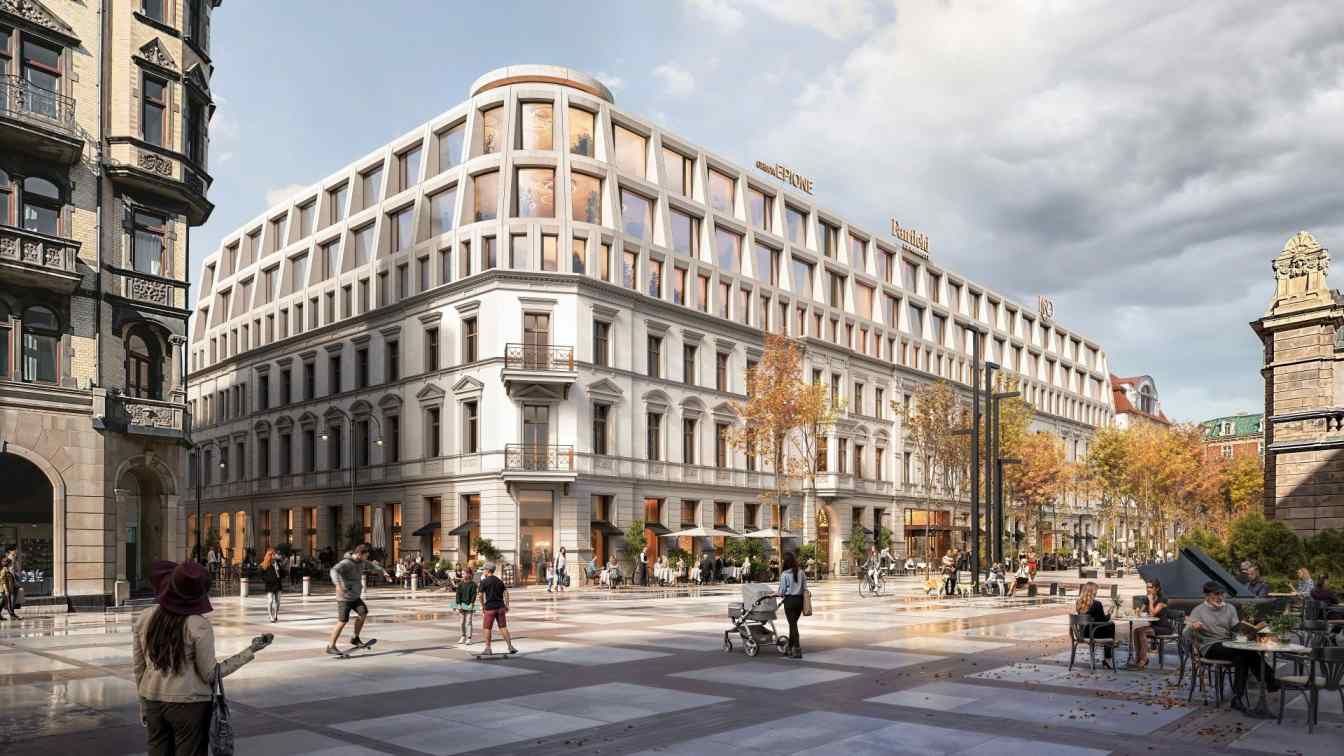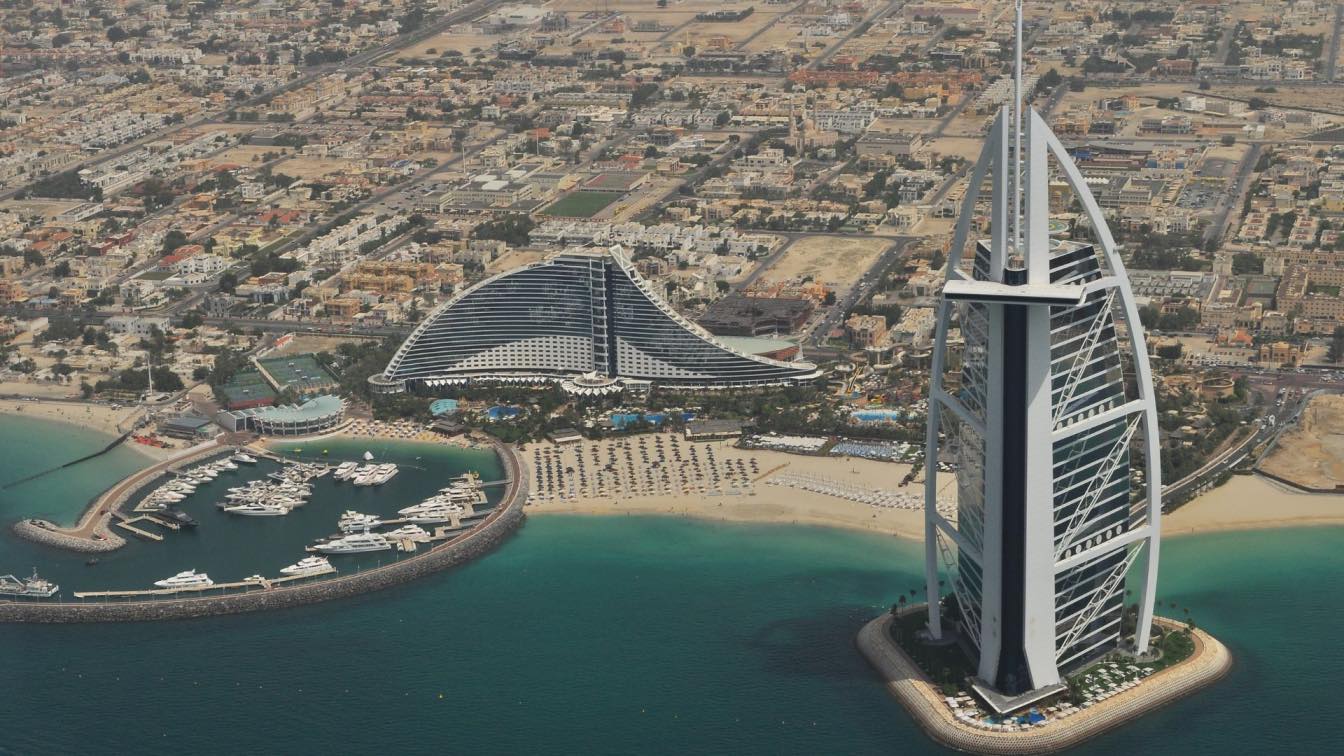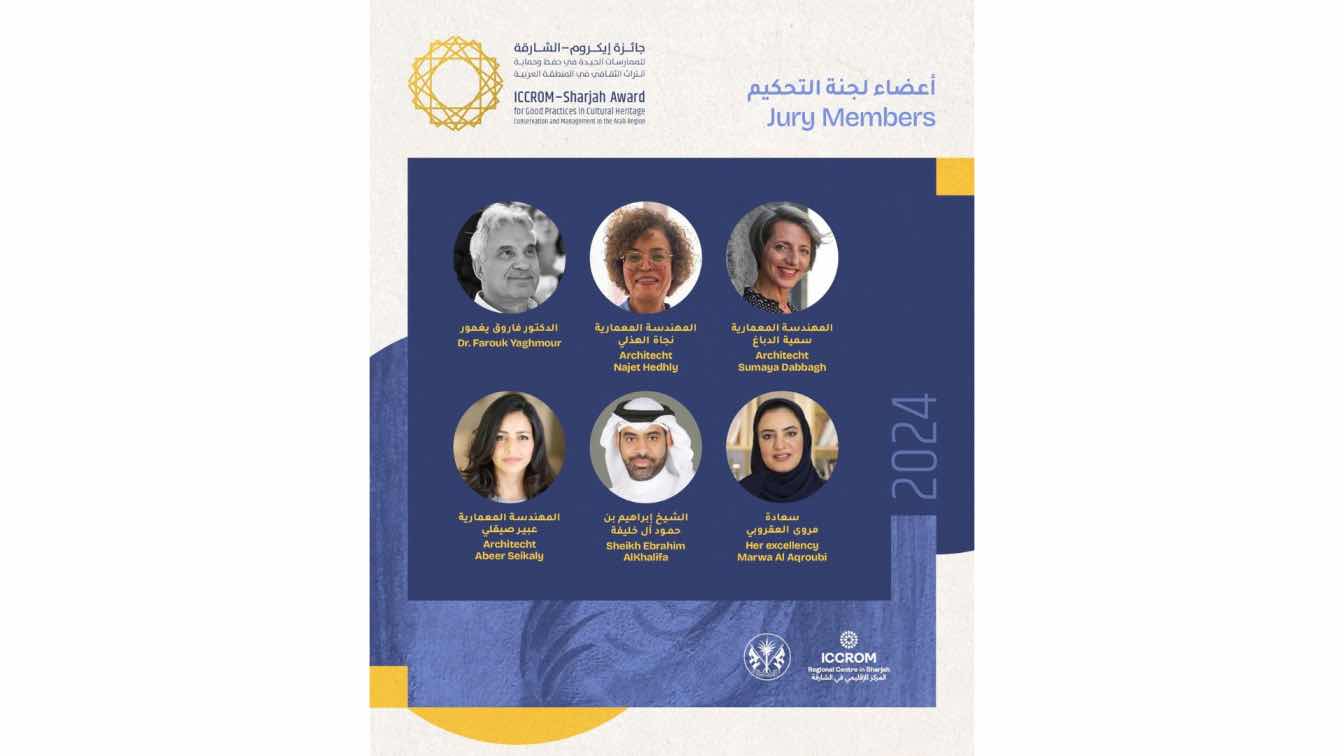The revitalization of Katowice’s Dworcowa Quarter stands as a prime example of an urban renewal project that not only aims to preserve the historic fabric of the city but also breathes new life into the very heart of the Silesian metropolis. At the same time, this investment by the Epione Group, designed by Konior Studio, seamlessly aligns with the principles of sustainable urban development.
Revitalization is not just about rescuing and restoring timeworn urban structures; it actively reinvigorates city centres, transforming forgotten districts and decaying buildings into vibrant spaces once again. By elevating the status of urban cores, revitalization addresses numerous social and urban planning challenges.
In Western Europe, urban renewal has been successfully implemented for many years, with projects such as Berlin’s Kreuzberg, Lyon’s Confluence, Vienna’s Gasometers, and London’s Docklands serving as exemplary models. Poland, too, has begun to appreciate the city-building role of revitalization initiatives. For instance, the historic Maria Mill in Wrocław now houses apartments and commercial units, while Bydgoszcz’s Mill Island has become a cultural and recreational hub. Meanwhile, Księży Młyn in Łódź, a 19th-century workers’ estate, has not only become an attractive place for residents but also a destination for tourists. In just a few years, Katowice’s Dworcowa Quarter will join the list of these model revitalization projects. The investment by Epione Group, designed by Konior Studio, is set to transform Katowice’s city centre and set new standards for urban renewal thinking.
“We see this project as a return to the proven models of classic cities. Tenement houses form quarters in the most desirable locations, shaping elegant street frontages. The diverse functions housed in the ground floors extend to the pavements, giving character to adjacent streets and squares. Rebuilt and modernized quarters create added value, combining tradition with modernity. This is the essence of urbanism,” says Tomasz Konior, the lead architect at Konior Studio.

A Thriving Heart of the City
Architects and urban planners often highlight the “desertification” of city centres and the decline of their status within the urban hierarchy. Suburbanization causes cities to “spread”, creating ever-larger peripheries. Katowice is no exception. In the capital of Silesia, southern and partially western districts like Kostuchna, Piotrowice-Ochojec, and Ligota-Panewniki have gained prominence at the expense of the city centre. Why is this happening? Limited availability of development land in central areas and high land prices make new investments in the centre increasingly difficult.
However, this is not the only reason for the declining status of city centres over the past few decades. Urban planning trends at the time envisioned the construction of large “bedroom communities” on the outskirts of cities, intended as a solution to the growing population. The post-communist shopping malls that proliferated on city peripheries only exacerbated this negative trend. As a result, the city structure has become fragmented, and typical urban activities have shifted from the city centre to the outskirts.
This urban sprawl creates a host of problems, from transportation issues to the accessibility of municipal infrastructure, making daily life more challenging and the city less resident-friendly. Travel to the centre, home to museums, trendy restaurants, offices, and municipal institutions, becomes more time-consuming, and local authorities are forced to invest heavily in infrastructure (e.g., roads, schools, and clinics) to meet the needs of suburban residents. Consequently, cities are losing their role as hubs for communal activity and local ties, becoming little more than collections of “urban islands”.

Revitalisation Improves Quality of Life in Cities
Revitalization can reverse this negative trend, a shift that has been evident in architecture in recent years. Take, for example, Copenhagen’s Sluseholmen Water District, built on eight artificial islands in the early 21st century, where quarter-based development was used. This proves that architects are increasingly returning to proven urban models, both in revitalization projects and new district developments. Classic urban structures—frontages, tenement courtyards, and squares—are experiencing a renaissance.
The Dworcowa Quarter in Katowice fits perfectly into this trend.
“The revitalization of the Dworcowa Quarter is a key step in the dynamic development of Katowice’s city centre. The restored tenement houses will not only preserve the architectural heritage of the city but also introduce a new level of urban space quality. Thanks to modernization, this area will become an attractive place for both residents and tourists. New hotels, restaurants, and cultural spaces will draw in visitors, artists, and locals alike, revitalizing the bustling city centre. This investment will be a symbol of the city’s growth, creating a modern district full of historical charm,” says Bogumił Sobula, Deputy Mayor of Katowice.
The adaptation of 11 historic tenement houses owned by the Epione Group will provide additional attractive commercial space in the heart of Katowice, to be used for retail, dining establishments, and hotels. This will create new jobs, stimulate local business growth, and provide Katowice residents with new leisure options.
“Projects like these benefit not only investors but also the entire community. Through their involvement, the renovation of historic buildings preserves cultural heritage and enhances the city’s aesthetic. Supporting such initiatives increases the value of surrounding properties, attracts new residents and businesses, and creates new jobs. It is an investment in the future of the city, strengthening its identity, appeal, and development potential,” emphasises Deputy Mayor Bogumił Sobula.

The revitalized Dworcowa Quarter will bring new life to its surroundings. Restaurants will fill with lively chatter, and hotels will open their doors to new visitors. Dworcowa Square will become a perfect spot for afternoon strolls and a venue for cultural and artistic events. In this way, Katowice’s centre will become synonymous with an open, forward-thinking, and rapidly developing city, attracting more tourists and entrepreneurs.
This will also benefit the city’s image. The tenement houses around Dworcowa, Dyrekcyjna, and Mielęckiego streets, which have long been eyesores with crumbling plaster and neglected courtyards, now have the chance to become a showcase for the city. Konior Studio’s design includes the restoration of beautiful architectural details on the façades. Entrances to hotels and offices will take on a grand appearance, while shop windows, level with the pavements, will open up to the square. By saving these historic tenements, the architects will restore the continuity of the city’s urban fabric, which has existed for over 150 years.
“Historic buildings create a human-scale urban fabric. Thanks to them, we recognize the urban patterns of streets, squares, and quarters filled with tenement houses that have been developed over centuries. This is no longer how cities are built today, which is a shame. People love traditional cities. Renovated, they will endure for future generations. I call this the art of good continuity. Old buildings and former districts are to a city what life-giving roots are to a tree,” Tomasz Konior stresses.

Everything Within 15 Minutes? Yes, It’s Possible!
The Dworcowa Quarter will also improve access to urban amenities. The densification of this part of the city and the creation of new commercial space through the revitalization of previously abandoned tenements will increase the availability of services and venues. Restaurants, bars, financial institutions, and shops will all be within a short walking distance. This dense network of businesses and services will make the city more resident-friendly —a place where everything necessary for personal and professional life is within easy reach.
Vehicular traffic will also be reduced (with the exception of necessary deliveries to local businesses and institutions), allowing for more pedestrian-friendly options such as walking or cycling.
In this way, the centre of Katowice will become a more liveable space, tailored to the needs of contemporary residents, with easy access to essential services, as well as opportunities for relaxation and leisure.

Dworcowa Quarter – A Marriage of Ecology and Economy
The revitalization of the Dworcowa Quarter fits perfectly into the concept of a circular economy, becoming a key component of modern urban policy. Utilizing existing resources reduces waste and energy consumption for building material production. Additionally, the reuse of existing energy and water infrastructure, coupled with improving energy efficiency standards, will help reduce the carbon footprint and conserve natural resources. Thus, the revitalization of the Dworcowa Quarter will also take on an environmentally friendly dimension.
The potential of a circular economy was recognized in the early 21st century by cities like Amsterdam, Glasgow, and Prague. As the planet’s resources dwindle and the availability of space for new investments, particularly in city centres, decreases, revitalization emerges as a form of urban self-regeneration.
The revitalization of the Dworcowa Quarter has the potential not only to become a flagship project for Katowice but also to serve as an impetus for similar initiatives throughout the city. By preserving the historic urban fabric while introducing new functions, it opens up new possibilities and makes the city more resident-friendly.













